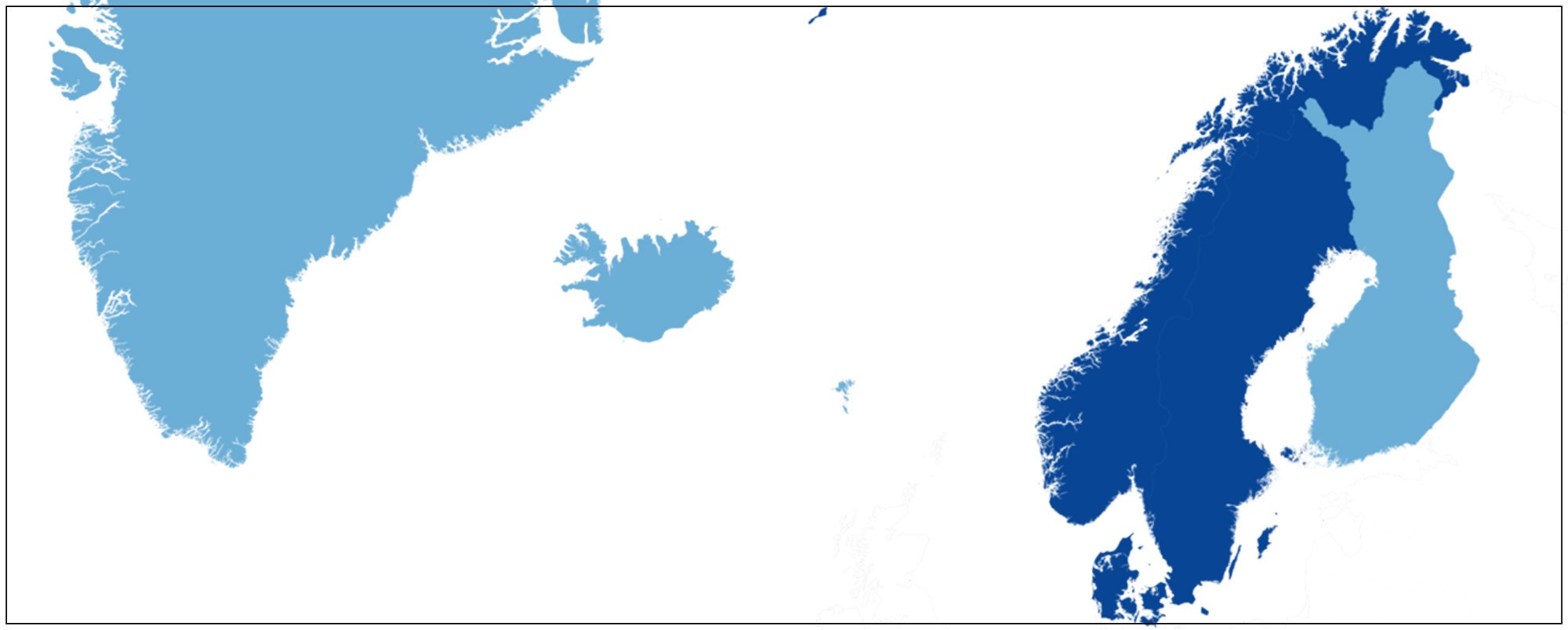
"All retail sectors are highly concentrated"
This is claimed by Professor Frode Steen, who is currently particularly concerned with the grocery industry.
He underlines that the grocery market is concentrated, but not significantly more so than other retail markets in Norway.[i]
"Competition measured as consentration in the Norwegian grocery market does not differ significantly from the situation in the rest of Scandinavia," Steen concludes.[ii]
The concentration in Sweden, Norway, Finland, and Denmark is remarkably similar. One player, ICA (Sweden), NorgesGruppen (Norway), Salling Group (Denmark) and S-gruppen (Finland) dominates with a market share of 35 to 53 per cent. 3 to 5 players typically share the rest of the market.
Over time in the last 20 years, only Denmark has decreased its grocery concentration. Norway, Finland, and Sweden score fairly similarly in terms of concentration measured using the HHI index, with Finland "at the top of the concentration podium". Silver to Sweden and bronze to Norway. Denmark is the least concentrated on the grocery retail side.
Too many shops – no
Several commentators, like e.g., Alexander Schøll, SIFO, has claimed that Norway has too many stores and that this drives the prices. The argument posed is that the number of stores per capita is much higher in Norway than in Sweden.
These commentators’ reasoning completely ignores the fact that in Norway we live far more dispersed throughout the country. In Sweden, people live much more urbanized and more dense.
The average citizen in Sweden and Norway has 9 and 12 shops respectively within a 10-minute travel distance. The exception is Oslo and Stockholm. Oslo has as many as 137 shops within a 10-minute travel distance, and even Oslo & Akershus seen together have 80. There are however, only 37 within this travelling range in Stockholm.
In northern Sweden and northern Norway, store density is completely the same. "So, the reasoning about too many stores in Norway is built on a misconception, where one does not adjust for the differences in demography, " states Steen.
“Large variation in gross margins or productivity could say something about competition in a market. However, comparing the profitability across the three largest grocery chains in Sweden, Denmark, and Norway, provide no support for large differences. Similarly for productivity development. One could for instance think that the gross margins in Denmark should be the lowest due to lower concentration and simpler logistical conditions. This is not obvious from the margin picture, it is not like Denmark systematically has the highest gross margins in Scandinavia," argues Steen.
Agriculture and VG
Norway's main distinguishing feature is a very high import barrier due to high import tariffs. This makes Norway into a much more closed grocery market than what we see outside Norway.
This has among others led to a low number of suppliers of typical agricultural products such as cheese, milk, and meat, and higher concentration on the supplier side. It also increases entry barriers for foreign competitors as Lidl and Aldi, since they cannot make use of their large buyer power and international efficiency in Norway.
"This is noteworthy and probably the major cause of high Norwegian prices for a number of grocery products," explains Steen.
On the other hand, it seems to be a broad political agreement in today’s political landscape to uphold, and even increase import barriers. Norway wants settlement and agriculture throughout the country, all the way – far north and far west.
It costs an estimated NOK 13 billion over the state budget, in addition to a shielding subsidy that is calculated to be of a similar amount. In total, the support to farmers is therefore approximately NOK 25 billion a year.[iii]
This corresponds to 830,000 per person-year in agriculture. As such there is little doubt that Norwegian agricultural policy drives up food prices: That is actually the whole purpose to uphold enough Norwegian agricultural production.
Another interesting aspect is that price dynamics are driven to a surprisingly high degree by price comparisons, and then in particular ‘VG's Food Exchange’! (VG is a newspaper/news site in Norway.)
"We find clear signs that prices fall towards VG’s price comparisons, and then rise afterwards. This is a pattern that follows from the need to win, or at least not lose by too much on VG measurements – when two thirds of the battle take place in the low-price segment," concludes Steen.
[i] Calculated with the measuring unit HHI (Herfindahl-Hirchman-Index), the sum of squared market shares. The average across sport-, books-, pharmacy-, gasoline and grocery sectors, is close to 2900, grocery had just about 3300 in 2022.
[ii] Frode Steen is a well-known academic within competition economics and industrial organisation. He has been a professor since 2004. He currently manages the NHH research project FOOD and holds the NorgesGruppen professorship in competition economics in grocery markets at the Norwegian School of Economics (NHH).
[iii] To put it in perspective; the Norwegian defence budget for 2024 is NOK 91 billion